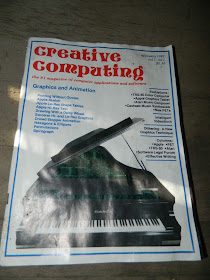A horse in the wild may travel 20 to 25 miles a day in search of food and water. Their feet wear naturally. We trim our horses hooves to mimic the natural wear they do not get, since they are confined to small pastures and probably don't travel 25 miles in a month!
If you are interested in finding out more about hoof care, please check out anything written by Pete Ramey. Here is a link to his website Hoof Rehab
We were blessed to find farriers who not only are experts in trimming barefoot horses, but who also practice "intuitive trimming". They watch for feedback from the horse during the entire time they are trimming the hooves.
Karina and Kirk of Barefoot Works! are "Natural Hoof Care Practitioners" located in Parker, Colorado. They have been trimming our horses since November of 2012 and I could not be more pleased with the changes I'm seeing in the horses.
If you are in the Denver area and would like to get in touch with Karina and Kirk, please visit their website at:
Free Boot Farm
What they do that is different from all other farriers I've ever seen is they pay attention to the horse's body language while they are trimming. Horses know what feels right and what doesn't and they make it very clear to you if you take the time to watch them.
I was so surprised to see my horses giving feedback to Kirk and Karina. After they've done some trimming and filing, they allow the horse to put weight on the foot. I watched my horses weight that foot, shift the weight off, then weight it again. They were testing how it felt after the trim. If it wasn't right, they would cock that leg and even lift that foot up again to signal there was more to be done. If they liked what they felt, they would lick and chew. Often, they would lift up the foot they wanted worked on next.
My Appaloosa cross Kipp was always a challenge when it was time to trim his hooves. Those of you who knew Kipp from his time at The Horse Shelter in Cerrillos, New Mexico can attest to his attitude about hoof trimming. He was very resistant to anyone messing with his feet. He didn't trust farriers. (Please read to the end of this post for important information on The Horse Shelter.)
Over the past two years, I've worked to help him understand what he needs to do when the farrier comes. We've made tremendous progress, but the real magic happened once Karina and Kirk started trimming him. It took two trims for him to realize that these farriers weren't like all the others. He relaxed and now even allows use of a hoof jack and a power grinder. Why? I think it's because he knows he can communicate with the farrier and has some control over what's happening.
In this video below, Karina talks a bit about intuitive trimming and shows how Kipp is responding to the changes she's making to his hoof to get it shaped and balanced correctly. (The video file was too large to embed it in this post. Therefore, please click on the link to the video's location on YouTube.)
Previously, Kipp's biggest objection during trimming was the rasp. He did not like how that felt. Interestingly, he's fine with the power grinder. Karina uses the grinder because it allows for more precision.
The second video is more of Karina working with Kipp.
I'm very proud of my horse. He has come so far since the days when he would rear up and kick at the farrier. Most of the credit goes to him for trying so hard to do what is asked. He is the best horse you could ask for!
Our Quarter Horse paint Jesse, suffers from chronic pain and stiffness from a broken pelvis that didn't heal correctly. Years of improperly trimmed hooves (heels to high and toes too long) caused rotation of his coffin bones to the point of mechanical founder. You could simply look at Jesse and see that he wasn't happy. His eyes were dull and he walked very, very stiffly. Everything about him telegraphed that he wasn't feeling good.
The combination of corrective trimming by Karina and Kirk and acupuncture from the veterinarian has made such a huge difference that it's hard to believe he's the same horse. Yes, he still walks somewhat stiffly and still drags his back feet. He probably always will because he doesn't have full range of motion in his hips. Now that his hooves are being rehabilitated, he's lively, more engaged and is challenging his position in the herd with the goal of moving up in the ranks.
This is Karina trimming Jesse.
All three of our horses stand quietly and patiently for their trimming and filing. And all three of them visibly 'test' each hoof after the trim then tell us how they feel about it.
Intuitive hoof trimming works. I see the horses communicating with the farrier. How blessed we are to have farriers who actually listen!
Does your farrier listen to what your horse is telling him?
OK...about The Horse Shelter....
My horse Kipp was adopted from The Horse Shelter in Cerrillos, New Mexico. Please click on the link above to go to their site and read about the amazing things they are doing.
If you are looking to acquire a horse, please go to a rescue organization near you and see the horses they have available for adoption.
Consider volunteering your time at a horse rescue. I did, and it was one of the most rewarding things I've ever done. Trust me, you will receive far more than what you give.
And remember,
Forget the cowboy. Just save a horse!






































